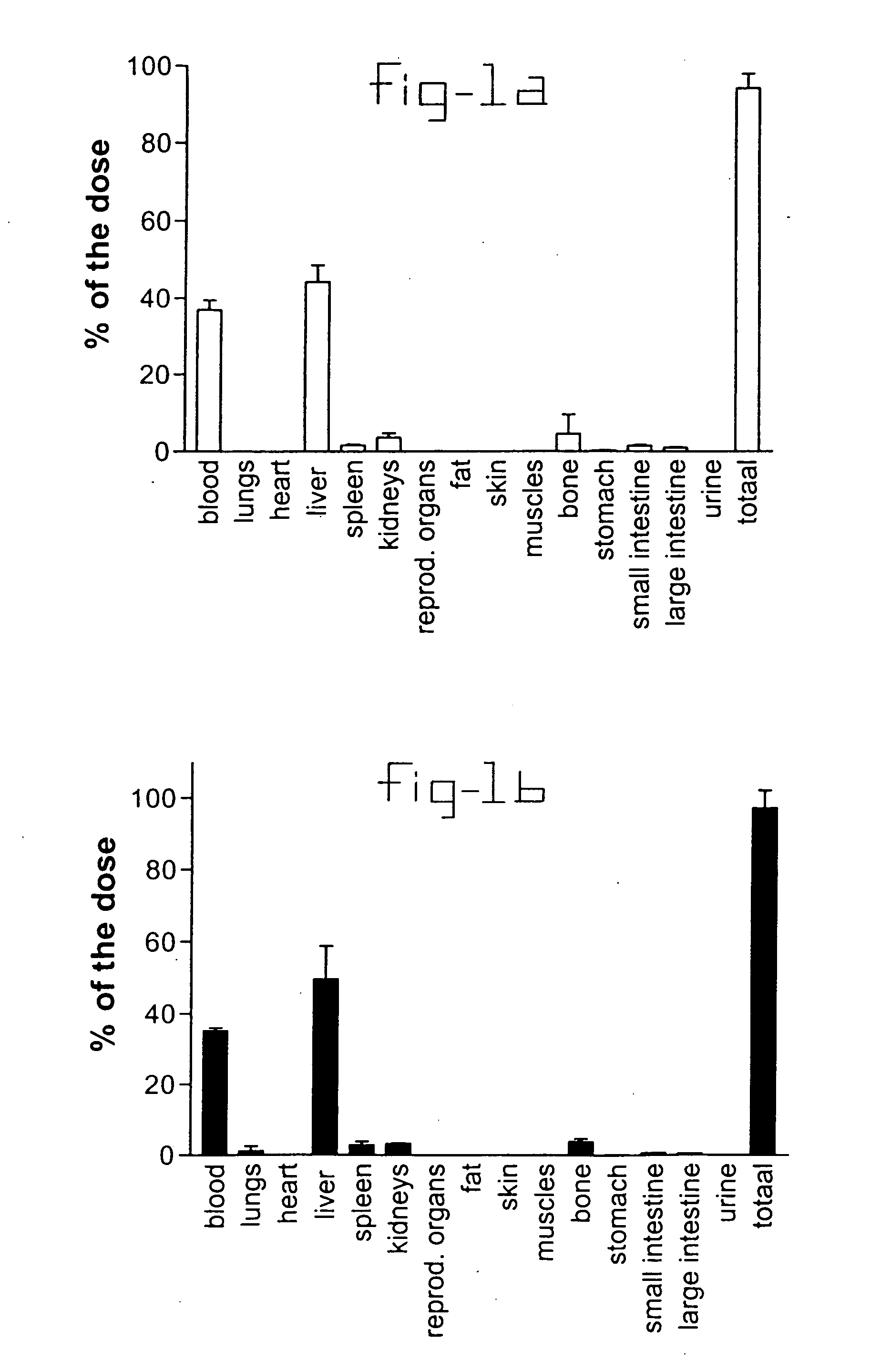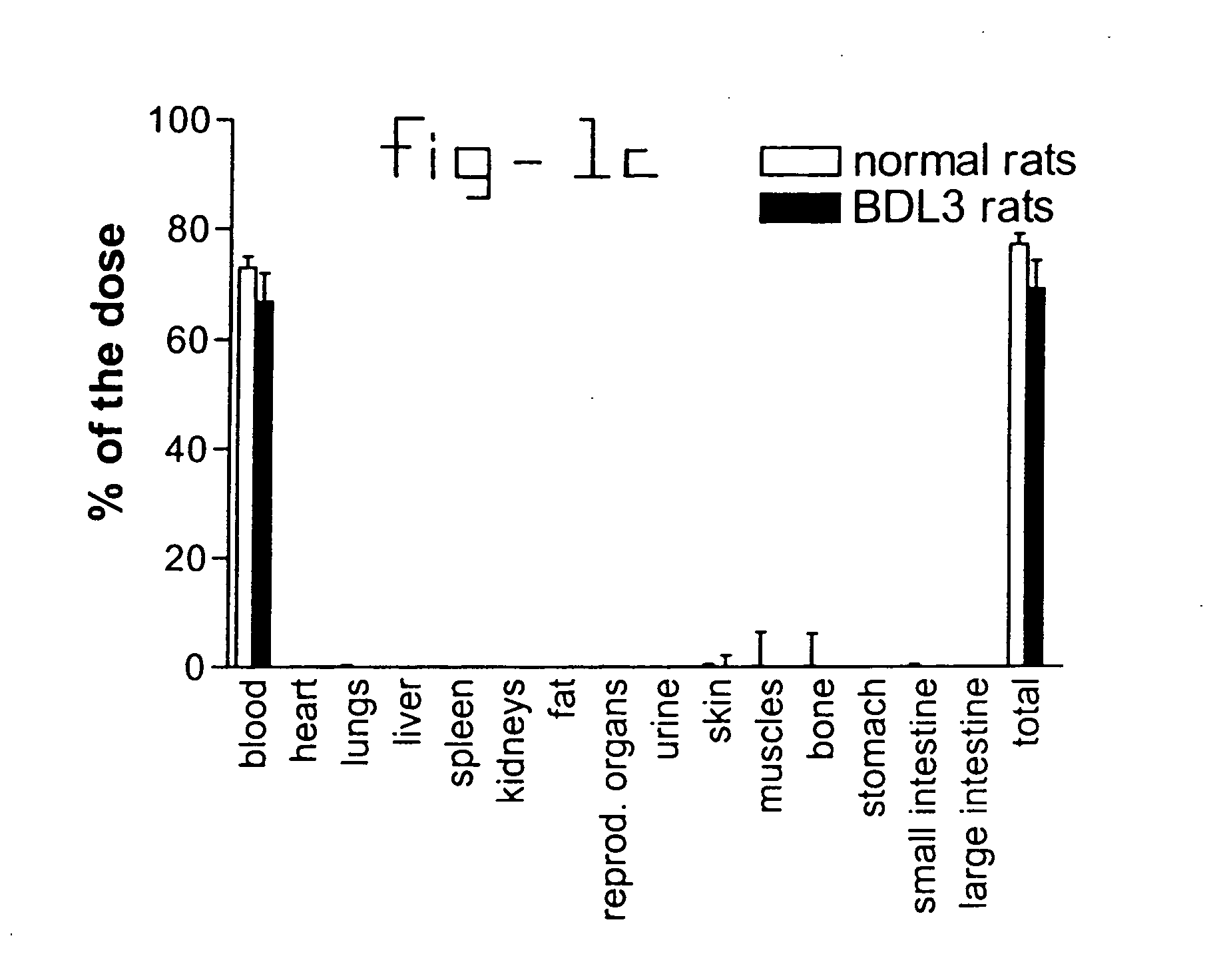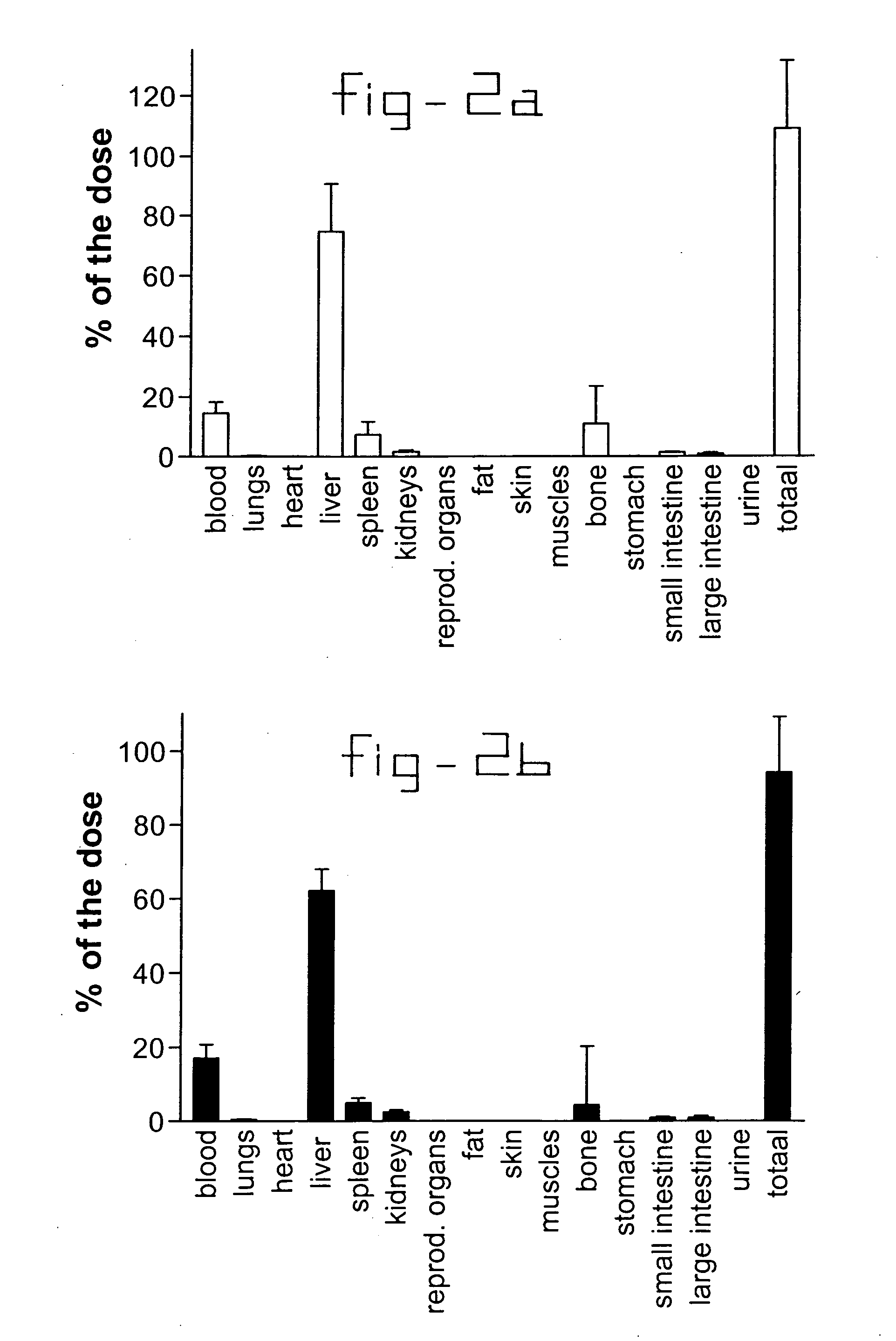Peptide stellate carrier devices for stellate cells
a carrier device and stellate technology, applied in the direction of depsipeptides, peptide/protein ingredients, macrololecular non-active ingredients, etc., can solve the problems of complete liver failure, deterioration of liver function, and no effective pharmacotherapeutic intervention for this diseas
- Summary
- Abstract
- Description
- Claims
- Application Information
AI Technical Summary
Benefits of technology
Problems solved by technology
Method used
Image
Examples
example 1
[0020] Normal rats and rats with liver fibrosis (3 weeks after bile duct ligation) received an intravenous injection of 10 mg / kg b.w. PDGF receptor-binding peptides conjugated with HSA. Based upon the results of the organ distribution studies with radiolabeled conjugates (FIG. 1), rats were sacrificed after ten minutes and samples of the liver and bone (from ribs, front paw, rear paw and the back) were removed for histochemical examination. No accumulation of this HSA-peptide conjugate was detectable in bone samples, whereas abundant staining was found in tissue samples. Upon cryostat sections of these livers double stainings were performed with anti-HSA antibodies and antibodies against Kupffer cells (ED1), endothelial cells (RECA-1), myofibroblasts (anti-actin antibodies) or hepatic stellate cells (desmin and GFAP antibodies). Subsequently, the number of double positive cells (HSA+ and cell marker+) were counted and related to the total number of HSA positive cells in the same are...
example 2
[0021] Normal rats and rats with liver fibrosis (3 weeks after bile duct ligation) received an intravenous injection of 10 mg / kg b.w. collagen VI receptor-binding peptides conjugated with HSA. Based upon the results of the organ distribution studies with radiolabeled conjugates (FIG. 2), rats were sacrificed after ten minutes and samples of the liver and bone (from ribs, front paw, rear paw and the back) were removed for histochemical examination. No accumulation of this HSA-peptide conjugate was detectable in bone samples, whereas abundant staining was found in tissue samples. Upon cryostat sections of these livers double stainings were performed with anti-HSA antibodies and antibodies against Kupffer cells (ED1), endothelial cells (RECA-1), myofibroblasts (anti-actin antibodies) or hepatic stellate cells (desmin and GFAP antibodies). Subsequently, the number of double positive cells (HSA+ and cell marker+) were counted and related to the total number of HSA positive cells in the s...
example 3
[0022] Another cyclic oligopeptide recognizing the PDGF-receptor can be described as follows: [0023] -cysteine-arginine-lysine-lysine-proline-cysteine-(C*RKKPC*),
where the cysteines (C*) represent the cyclisizing residues.
[0024] Only some crucial amino acids for the PDGF-binding peptide are provided here. The oligopeptide may be elongated without causing a change in the cellular distribution pattern in vivo. Cyclisation of this peptide can be achieved by a disulfide bond between both cysteine groups, whereas the free amine in one cysteine residue can be used to couple the oligopeptide to a core-molecule like albumin. Coupling of more than one oligopeptide to albumin can be readily done.
PUM
| Property | Measurement | Unit |
|---|---|---|
| biocompatible | aaaaa | aaaaa |
| endogenous plasma | aaaaa | aaaaa |
| size | aaaaa | aaaaa |
Abstract
Description
Claims
Application Information
 Login to View More
Login to View More - R&D
- Intellectual Property
- Life Sciences
- Materials
- Tech Scout
- Unparalleled Data Quality
- Higher Quality Content
- 60% Fewer Hallucinations
Browse by: Latest US Patents, China's latest patents, Technical Efficacy Thesaurus, Application Domain, Technology Topic, Popular Technical Reports.
© 2025 PatSnap. All rights reserved.Legal|Privacy policy|Modern Slavery Act Transparency Statement|Sitemap|About US| Contact US: help@patsnap.com



